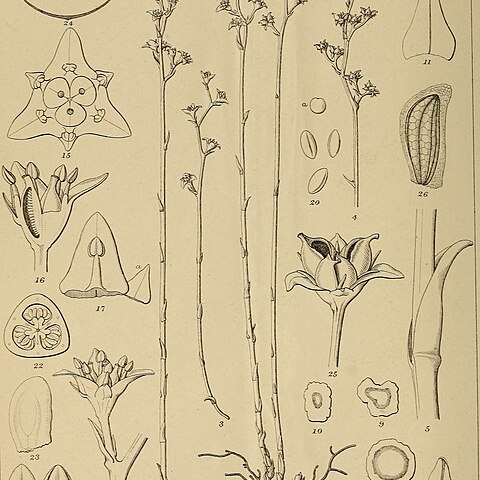Herbs small, mycotrophic, without chlorophyll, with a slender, scaly rhizome. Stem erect, simple, slender. Leaves reduced to alternate scales. Inflorescence a corymb or a raceme, terminal, to more than 10-flowered. Flowers bisexual, arising from axils of small bracts, erect, small, often subtended by a bracteole. Perianth segments 6, connate at base, persistent, inner ones larger than outer. Stamens 6; filaments subulate, adnate to base of perianth segments; anthers ovate, dorsifixed or nearly basifixed, introrse. Ovary superior to semi-inferior; ovules numerous; carpels 3, connate for 1/4--1/2 their length, sometimes connate only at base; septal nectaries present. Styles short; stigmas capitellate or slightly 2-cleft. Fruit a capsule, folliclelike. Seeds small, elliptic, ± winged.

